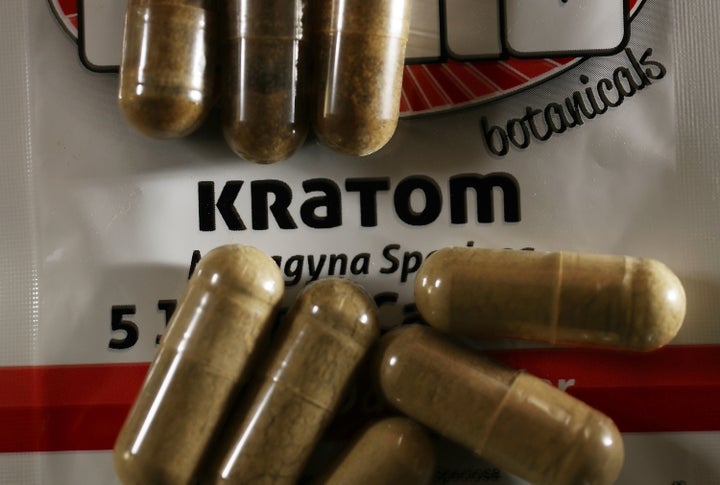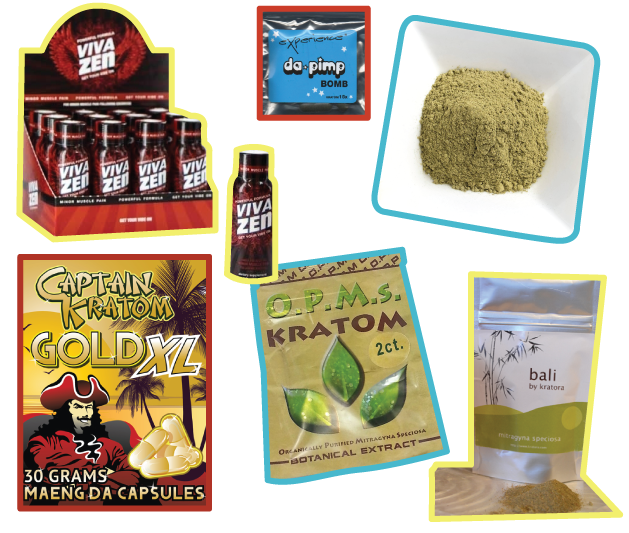
The U.S. Drug Enforcement Administration is moving to place the herbal supplement kratom on its list of Schedule I drugs, effectively banning a naturally occurring psychoactive substance that some say holds promise as a therapy for opioid addiction.
The DEA, in a notice published in the Federal Register this week, said it wants to include two active kratom ingredients in its most restrictive classification of drugs with high potential for abuse and no known medical benefit, signaling that the government considers the plant as dangerous as heroin. The scheduling move would last for two years, with a possible extension of an additional year, and would go into effect at the end of September.
Kratom is made from the leaves of Mitragyna speciosa, a Southeast Asian tree related to coffee, and has been consumed in Asia for millennia, typically as a tea or powder. The herb contains alkaloids that appear to activate opioid receptors in the brain and reduce pain. Although most opioids have sedative qualities, low to moderate doses of kratom serve as a mild stimulant.
These characteristics have led advocates and some researchers to claim that kratom can be used as a maintenance drug, or a step-down treatment, to help recovering opioid addicts.
But the DEA, in its Federal Register notice, dismisses these applications, seizing on the herb’s addictive potential and declaring that kratom is being “misused” to self-treat chronic pain and opioid withdrawal symptoms.
“Kratom does not have an approved medical use in the United States and has not been studied as a treatment agent in the United States,” reads the notice. “Especially concerning, reports note users have turned to kratom as a replacement for other opioids, such as heroin.”

The DEA notice shows that prohibition remains a favorite tool of the nation’s drug warriors, despite ample evidence that it doesn’t work. The DEA did not respond to a request for comment.
Susan Ash, founder of the American Kratom Association, a consumer-based nonprofit, shared her personal experience with The Huffington Post earlier this year, describing how the herbal supplement has helped her return to a normal life after a struggle with chronic pain ― and opioid addiction ― due to complications from Lyme disease. Ash said she didn’t hear about the DEA’s intention to place kratom in Schedule I until reports began emerging online Tuesday.
“We really believed that because of the progress medical marijuana has made through the states, that the federal government was going to leave kratom alone and leave it to the states to decide whether it was appropriate to be legal,” Ash said.
Some states have been addressing kratom over the past few years with bans or restrictions on its sale.
The American Kratom Association has advocated for measures that address labeling, marketing, age restrictions and other efforts to crack down on unscrupulous manufacturers who make outlandish medicinal claims or attempt to sell kratom as an opiate equivalent. The group had hoped to continue an active role in ensuring consumers could use kratom safely and responsibly, said Ash.
“Rather than have an emergency scheduling, why not host a summit meeting with all of the groups and organizations and investors that are out there selling this product and say, ‘Hey, these are our concerns. If you don’t clean this up this is what we’re going to do?’” said Ash. “Why not go to the sources that they’re having the problems with?”
The federal government’s decision may be devestating for Americans who have used kratom for pain management and treatment for a variety of other health issues, said Ash. With harsh penalties likely to come with the DEA Schedule I designation, many people will be forced to decide whether to risk the purchase of kratom on the black market, seek legal narcotics associated with addiction and other problems, or attempt to manage without any treatment.
A string of sensationalist news stories and reports of abuse have helped push a narrative that kratom is a dangerous and potentially deadly new recreational substance.
Some of the reports have involved fatalities. But in the majority of those cases, toxicology tests showed that kratom users who died also had signs of abusing other drugs or pre-existing health conditions. In a number of instances, they appear to have taken deceptively marketed products that also contained dangerous synthetic drugs.
“Prohibition is going to be counter-productive and do more harm than good.”
- Jag Davies, Drug Policy Alliance
The DEA notice cites the Centers for Disease Control and Prevention’s recent decision to declare kratom an “emerging public health threat,” based on calls to poison centers, as well as an increasing number of drug tests detecting kratom.
In the six years from January 2010 to December 2015, the CDC found 660 calls to U.S. poison centers related to kratom. From December 2014 to March 2016, the agency documented 555 positive test results for mitragynine, the psychoactive alkaloid in kratom.
The DEA notice says the trend shows “growing abuse and popularity of these substances.” Ash noted that the numbers are just a tiny portion of the more than 3 million annual calls to poison centers, and the millions of drug tests the CDC surveyed.
The DEA’s report contains confusing language about the substances it wants to ban, repeatedly referring to kratom ingredients mitragynine and 7-hydroxymitragynine as “opioids,” which they are not. Although the compounds do activate opioid receptors, so do some chemicals found in cheese.
Walter C. Prozialeck, a professor of pharmacology at Midwestern University who wrote a comprehensive literature review on kratom for the Journal of the American Osteopathic Association, said he disagrees with the DEA’s characterization.
“Even though the ‘mytragines’ may have some affinity for opioid receptors, their actions are quite different from those of classic opioids, like morphine, hydrocodone, oxycodone, heroin, etc.,” Prozialeck wrote in an email to HuffPost. “After looking at the literature, I would certainly not classify them as classic ‘opioids.’”
Prozialeck described kratom as largely benign in an earlier interview with HuffPost, and said it doesn’t produce much in the way of psychoactive high in low to moderate doses. He called for additional research and cautioned against mixing the drug with other substances ― a concern the DEA notice also raised. But he said kratom doesn’t have a particularly high potential for recreational abuse and agreed with advocates who say the positive effects appear to outweigh the negatives.
There is little disagreement among kratom supporters, drug-policy reformers and some lawmakers on the need for regulation and education.
“These are all things that decades of public health research shows us are necessary,” Jag Davies, director of communications strategy at the Drug Policy Alliance, told HuffPost. “But prohibition is going to be counter-productive and do more harm than good.”
Classifying kratom as a Schedule I substance underscores some of the worst tendencies of U.S. drug policy. For one, plants and naturally occurring herbal supplements are subject to a complex regulatory challenge. Winning Food and Drug Administration approval to sell a synthesized drug typically costs pharmaceutical companies billions. Big Pharma has little incentive to seek approval for plants like kratom, as companies can’t exactly patent leaves that have been around for millions of years.
Opting to place kratom alongside the most dangerous drugs also shows that the nation’s drug enforcement apparatus remains dominated by abstinence-only tactics. Withdrawal symptoms and health effects associated with kratom are minor, compared with heroin or synthetic opioids, for example. By that measure, Davies said that if someone is using kratom as treatment for opioid addiction, that can be considered a step in the right direction.
Even as President Barack Obama and other government leaders increasingly come around to a more nuanced, treatment-centric vision of drug policy, the DEA is showing that old habits die hard.
“It’s kind of shocking that despite all of the progress that’s been made toward treating drugs as a health issue instead of a criminal justice issue, that still, after all these years, the immediate reaction of politicians and policymakers is to go with knee-jerk prohibition,” said Davies.
